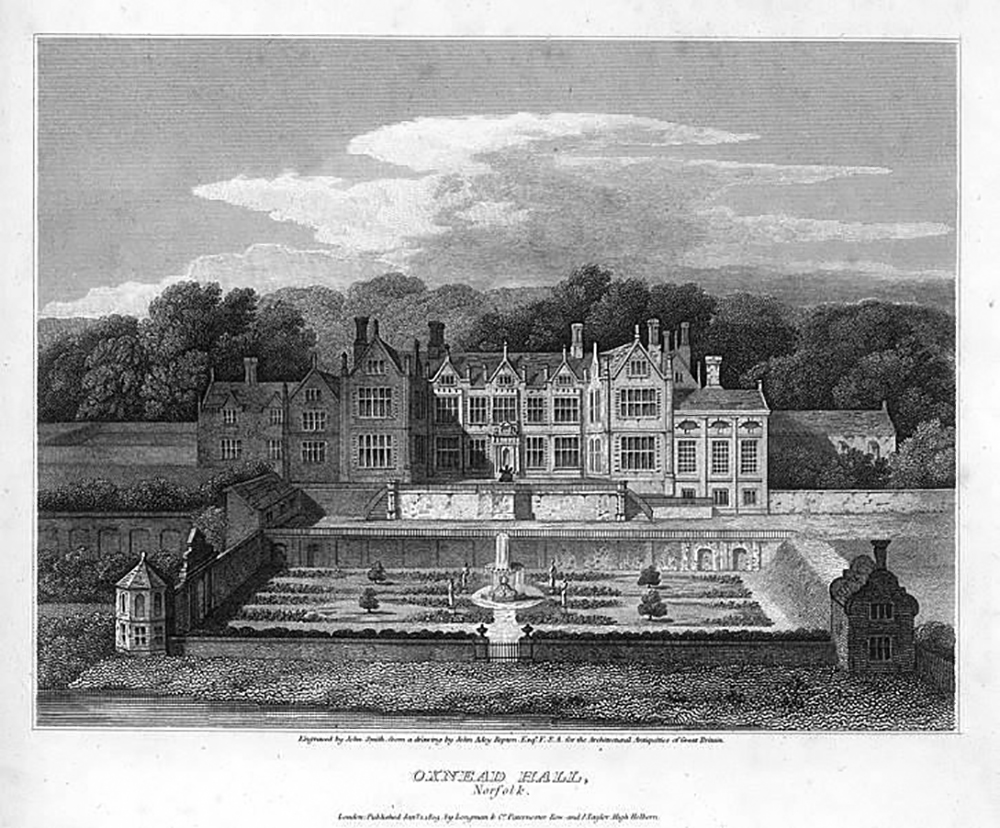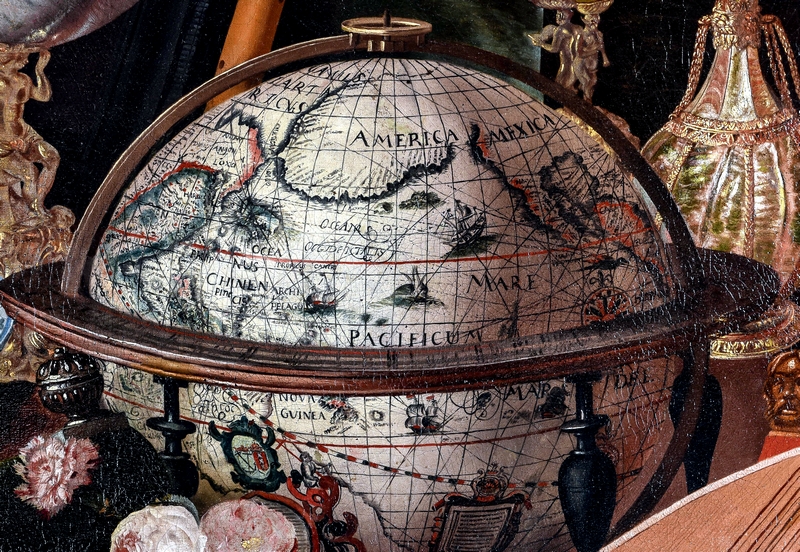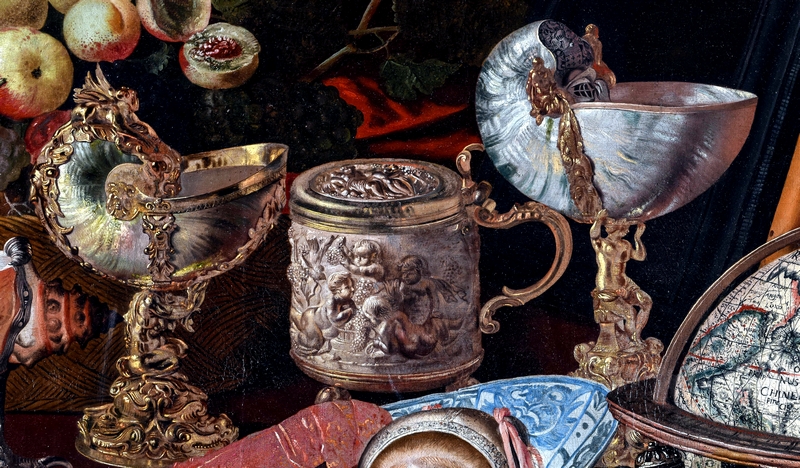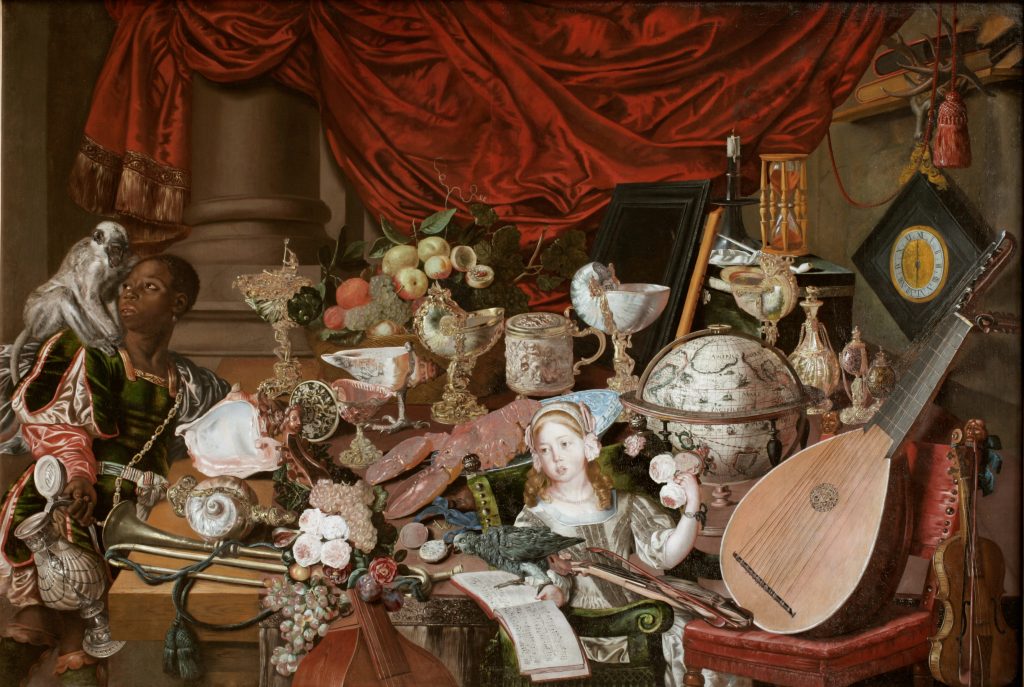The Paston Treasure is on display outside the Community Centre in Garden Street
The Paston Treasure c.1665 was comissioned by Sir William Paston or by his son Sir Robert. It shows a some of the family treasures collected from their overseas travels. Painted by an unknown Dutch artist who stayed with the Pastons at Oxnead Hall near Aylsham for approximately 3 months whilst completing the work.
It is a record of the magnificent collections once held at Oxnead, home of the Paston family. It is from the Dutch School, and apart from its visual beauty and thematic complexity, its importance lies in the international scope and interest of the objects portrayed, reflecting both the exotic nature and the skills of man.
The painting was lost for centuries until 1947, when it was donated to Norwich Castle Museum.

The Paston Treasure is the subject of a book by senior research scientist, conservator and art-historian, Spike Bucklow.
The Pastons
The Pastons were one of Norfolk’s most prominent families from about 1380 to 1750, rising up from a rural manor to become nationally important members of the aristocracy and key figures in the dynamic power-play and politics of the Tudor and Stuart courts. What makes the Paston family truly unique is that they left the earliest and largest collection in the country of documents detailing their everyday lives – the now famous ‘Paston Letters’. These accounts tell stories of their tumultuous lives, as well as the intrigues of the wider events of the world. Valuing education for their children, using the newly emerged law courts alongside dramatic sieges, and the female Pastons playing key roles in their estates and family management, they were, in many ways, the first modern family. (source: Paston Heritage Society thisispaston.co.uk/)


The Paston family fought their way to significance, land and wealth. William Paston built his new mansion at Oxnead in Norfolk, filling it with a fine library and collection of art, some bought during his world tour of 1638–39. Contemporary inventories list quantities of tapestries, paintings, sculptures, and miscellaneous items such as stuffed crocodiles.
Surviving archives list hundreds of fine works of art of a scale and grandeur that could have graced a royal palace. Hardly anyone in England at that time, had collections to equal this.
The treasures depicted in the painting represent a fraction of what was one of the most remarkable, privately assembled cabinets of rarities and curiosities in seventeenth century England. The Paston Treasure was clearly commissioned to promote the family’s wealth and sophisticated artistic taste.
The objects
The work is in the vanitas still life tradition, probably commissioned by the ageing William Paston in the early 1660s to memorialise his collection, one of the greatest in Europe. It is about legacy, family and the craving for recognition of status and wealth.
The painting is still very much a mystery and many experts have developed various theories about the work. The objects were collected by Robert and his father, Sir William Paston (c.1610–1663) who made acquisitions on a long journey travelling through Europe and on to Cairo and Jerusalem. The whole collection consisted of over 200 objects and included many natural curiosities made into decorative art objects, such as mounted seashells and ostrich eggs. the painting features a pair of silver-gilt flagons, a Strombus shell cup, two unique nautilus cups and a mother of pearl perfume flask.
Measuring nearly 2.5 metres across this is an enormous and visually stunning work of art, though elements of overpainting and colour fading over the centuries have altereded it’s original luscious colouring. It features a lavish display of gold and silver, exotic objects, musical instruments, fruits and flowers, a lobster, a monkey and a parrot, in addition to portraits of an unnamed young girl and a young black servant, the earliest known portrait of an African in Norfolk. Though all are painted in meticulous detail, scale and perspective are ignored thus creating a bizarre floating collage effect.
Symbolism
Much of the painting remains a mystery, though scholars have interpreted some of the compositional elements. William Paston was a man of universal interests, he studied mathematics, alchemy, the cosmos, theories of time, the arts and music, the painting echoes this by featuring related items and artefacts. The overall wealth and culture on display, food and rich drapery also show that the Pastons were known for their lavish hospitality and maintained a large household of servants. There is no record of whether the beautifully attired black servant was a freeman or a slave.
The Globe symbolises his interest in wider horizons, as do the finely decorated shell cups from foreign lands, the exotic parrot and the monkey too. Golden artefacts prove the family’s wealth and the music sheets and instruments promote the Paston’s sophistication and taste.
The sickly young girl was probably Robert Paston’s daughter, perhaps she represents the new generation who will inherit this wealth and culture.
Sadly however the Pastons and their magnificent collection were doomed and the painting proves eerily prophetic. It shows us far more than just a straightforward ostentatious display of riches. There are strong hints that all is not as it seems. The artist includes many motifs – flowers, fruit, monkey, clocks, a guttering candle, symbolising time, vanity, chaos and death.
The Pastons over-reached themselves hugely both in their spending and their ambitions and within less than a century were bankrupt. By the 1730s the collection was sold, the male line had died out and their magnificent home, Oxnead Hall, where they once entertained King Charles II, fell into disuse. Only one third of the house now remains.
Rediscovering the Painting
There is a record that the Buxton family purchased artefacts from one of the sales held at Oxnead Hall in the early eighteenth century, when the Pastons were rapidly heading for bankruptcy. Though the individual items from that sale were not listed, it seems most likely the picture was included and thus stayed in the Buxton family for more than 240 years.
The painting was lost and unknown for centuries, and before it was donated to the Norwich Castle Museum in 1947, its last owner, a member of the Buxton family, warned that it was “very faded, of no artistic value, only curious from an archaeological point of view.” It is now on display, with the strombus shell in an enamelled mount, as part of the Norwich Castle Museum Collection.
Sources: Wickipedia, Norwich Castle Museum, Yale Center for British Art, Paston Heritage Society

